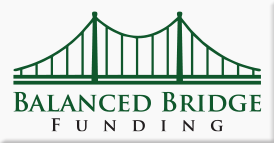Third Party Litigation Finance is Different in the United States
Third Party Litigation Finance – United States Versus Other Countries. Like any industry, legal funding is shaped by local laws and history. Though the history of third-party litigation funding (TPLF) is relatively young, it’s still full of twists and turns, and it has branched off to create exciting new ventures.
We’ve explained how the industry’s overseas migration resulted in some significant differences between funding styles in Australia, Europe and the United Kingdom, Canada, and the United States. We took a closer look at the ethical implications of legal funding practices in each of those distinct regions and discussed the unique conditions surrounding each ethical question.
Now that we have a good background of the history of funding and how litigation finance works around the world, we can zoom in on our local version of TPLF. We’re going to dive deep into the world of US-style legal funding, an outlier among its peers, and examine what makes it so truly unique.
Class Action Prevalence
Third Party Litigation Finance – United States Versus Other Countries. The United States is known for its class action system. Why? Because class actions as they exist in the United States are extremely rare elsewhere. In fact, many countries actually forbid or strongly regulate against class action lawsuits.
In most countries, a lawsuit can only be waged by a single person. As soon as two or more people claim that the same suit represents their interests, they’re walking on shaky legal ground. Some countries, like Belgium and Denmark, allow multiple individuals to “opt in” or “opt out” of a class, like in US law, but class lawsuits typically only apply to liability or business issues. Personal injury or medical malpractice class actions, for example, would not be covered under Belgian law.
Other countries, like Germany and England, are more prohibitive when it comes to class representation. Even if multiple people have experienced the same tort or suffered the same breach of contract, each case must be tried individually under the laws of these and other countries. Even the smallest “class” is forbidden.
Litigation Finance Industry Has More Opportunity in US
Third Party Litigation Finance – United States Versus Other Countries. There are still other countries with procedures that rest in between: the Czech Republic, for example, allows some groups trials in very specialized situations, but cases with a single representative are much more prominent.
Because of the unique class action system in the United States, where there are very few restrictions on when and how a class can form, the litigation finance industry has more opportunity to serve plaintiffs and attorneys. Specific scenarios and regulations can be predicted based on common legal scenarios, such as delayed settlements in MDL cases or delays due to records authorizations for minors. In other countries, where class scenarios are less common and thus less predictable, legal funding hasn’t adapted to include class actions.
Attorney Fees
Third Party Litigation Finance – United States Versus Other Countries. Lawyers need to get paid for their hard work, and every country has a different way of guaranteeing that attorney fees are received. But once again, the United States strays from the pack when it comes to this matter.
The United States is one of the few countries that offers litigation funding to attorneys as well as plaintiffs. While Australia, the EU, and Canada primarily fund plaintiffs, typically only extending financing to attorneys working the commercial realm, the United States has seen legal finance companies extend pre- and post-settlement advances, as well as lines of credit, to individual attorneys and law firms alike. This difference in treatment is likely due to two key aspects of the US legal fee structure: the existence of contingency fees and lack of loser fees.
Contingency Fees
Third Party Litigation Finance – United States Versus Other Countries. As we’ve mentioned before, Australia and many countries in the EU have a system of Legal Expenses Insurance (LEI) in which people pay a small premium in exchange for guaranteed legal coverage in the event of a tort, like an injury or a theft. LEI not only guarantees that people can afford their legal expenses, but guarantees that their attorneys will get paid.
As the United States has no such program as LEI, there is no assurance that plaintiffs can afford litigation, nor any certainty that plaintiffs’ attorneys will be paid. To eliminate some of the stress of the unknown, many plaintiffs’ attorneys operate on a contingency fee basis. What this means is that contingency fee attorneys only receive payment if they are able to successfully try their clients’ cases. In the event of an unsuccessful case, the client is not responsible for payment. (Though Canada does not offer LEI, it does not offer contingency fees, either.)
Contingency fees open yet another opportunity for litigation finance. Unlike attorneys who are assured payments via LIA, attorneys who work on a contingency fee basis often have to wait for long periods of time to actually see the fruits of their labor. Litigation funding offers these attorneys a way to make use of their capital before a case is decided. Most legal funding firms offer non-recourse advances, so attorneys don’t have to worry about owing money if their cases are unsuccessful.
Loser Fees
Third Party Litigation Finance – United States Versus Other Countries. The majority of countries that practice litigation funding also have a “loser fee” practice; that is, in addition to their own attorney fees, the losing party in any case covers the legal expenses of the winning side. The United States is one of the few countries that does not have a loser fee model; this is possibly because of the contingency fee model, described above.
As Canada and Australia have discovered, incorporating loser fees into a sustainable litigation funding model can be quite frustrating. Fortunately for legal finance firms in the United States, this issue has been avoided altogether.
Attorney Funding: A US Anomaly
Third Party Litigation Finance – United States Versus Other Countries. The unique properties of US-style litigation allow legal finance companies in the United States to do something that companies across the world don’t: they can offer their services directly to attorneys, not just to plaintiffs.
To recap, some countries have no need to offer legal funding to attorneys and law firms because the legal systems in those countries already offer financial security to plaintiffs’ attorneys. In other countries, legal funding for attorneys is made complicated by uncertain rules.
The United States, with its contingency fee structure and relatively well-defined class action structures, is ripe for a diverse legal funding landscape.


